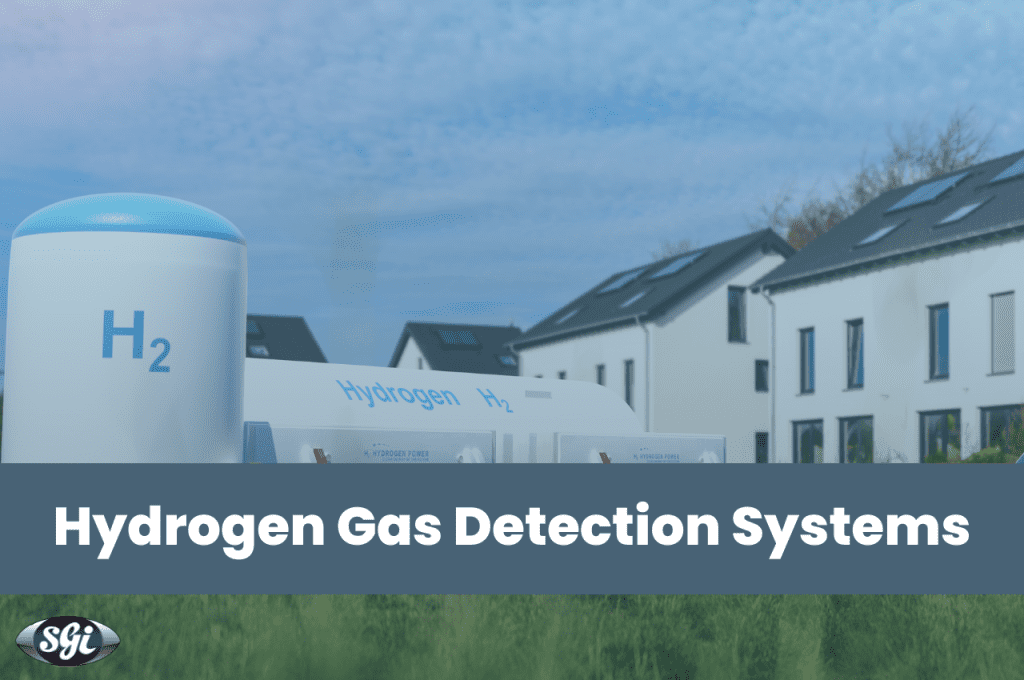
Why hydrogen?
The world is moving towards sustainability and zero-carbon emissions as we course-correct away from climate change on our way to development. Hydrogen is bound to play a pivotal role in this journey towards decarbonization. As a sustainable fuel source, the availability of hydrogen and its advantages play a major role in making it a popular choice across applications. This brings us to the topic at hand, the importance of hydrogen gas detection and safety protocols.
Hydrogen gas applications and risks
Hydrogen is commonly used in semiconductors, renewable energy industries, refineries, coolants, power generations, and more. While hydrogen in lower concentration is non-toxic and safe for humans to inhale, at higher concentrations it leads to asphyxiation and displaces oxygen in the body. Since the gas does not have any peculiar smell, it is highly difficult for people to identify it, making it a safety hazard.
Hydrogen gas detectors
While there are a bunch of gas detection technologies in the market, the ones that are used in a hydrogen gas detector are:
1. Electrochemical sensors: These sensors use electrochemical reactions to determine the level of hydrogen present in the atmosphere. The detectors are small and cheap, useful for portable gas detection applications. Although, these sensors are sensitive to carbon monoxide and have a comparatively shorter shelf life ranging between 2-3 years.
2. Semiconductor sensors: The sensors in these detectors rely on chemical reactions to help determine the concentration of hydrogen. These are tougher in nature with low sensitivity towards toxic gases and a longer shelf life of over 5 years. The detector showcases results in the ppm range ensuring better accuracy. Although, the sensors are prone to temperature and humidity, making it difficult for certain applications.
3. Catalytic bead or pellistor sensors: The detector uses a chemical catalyst and the resulting temperature difference within the mechanism to detect the presence of hydrogen. These detectors are the most common, low cost, and reliable solutions for most gas detections. They have a long life span of 5-10 years, depending on their quality and manufacturing. They help calculate and monitor % LEL of hydrogen as against ppm. Although these are susceptible to poisoning when exposed to high concentrations of certain gases.
What is the concentration limit for evacuation issued by regulators for hydrogen?
While hydrogen is non-toxic to humans, it is highly flammable in nature. This is the reason most regulators have set exposure standards based on its flammability or explosion levels. The U.S. Environmental Protection Agency recommends personnel evacuation at 10% of the Lower Explosion Limit (LEL). The explosive limit of hydrogen is 4100ppm or 4.1% of volume which brings the mandated 10% to 410 ppm.
Hydrogen gas detector testing and calibration
Hydrogen gas detectors are usually tested using the bump test method i.e. the gas detector sensor is exposed to a blast of gas and checked for responses. If the detector identifies and responds to the bump test correctly, it is in proper working condition, if not, it requires service or replacement. Bump tests must be carried out frequently, depending on the risk factor involved with the environment in which the gas detector is present.
Hydrogen gas detector calibration, on the other hand, is the technical job of adjusting the device parts to showcase a more accurate reading. Since, with use, the detector's sensors are bound to degrade, their accuracy at identifying the concentration of hydrogen in the environment maybe affected. Gas detection calibration ensures that this does not happen. The calibration accuracy depends on the quality of tools used in the calibration kit. The calibration kit consists of calibration gas cylinder, gas regulator, tubing, and cap fitting. The operator must choose the correct calibration gas, in this case hydrogen, with the right concentration, highest quality regulators, and the best quality accessories. Calibration gains importance in cases where accuracy is paramount such as a scientific lab or where the device is used in extreme environments where temperature and humidity highly affect the sensors.
SGI's valves, regulators, and accessories have been used by industry stalwarts across the world and have been certified by all major regulatory authorities. Enquire now to know more about our products!